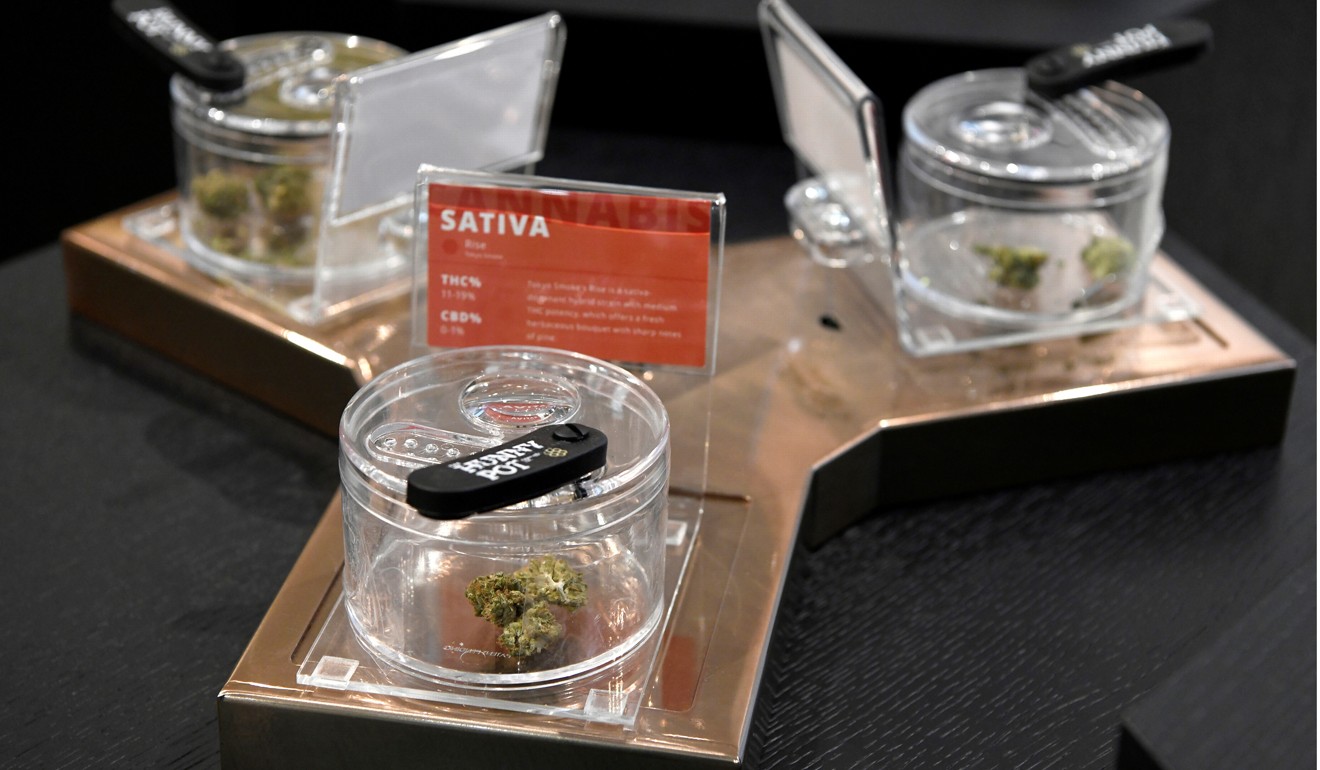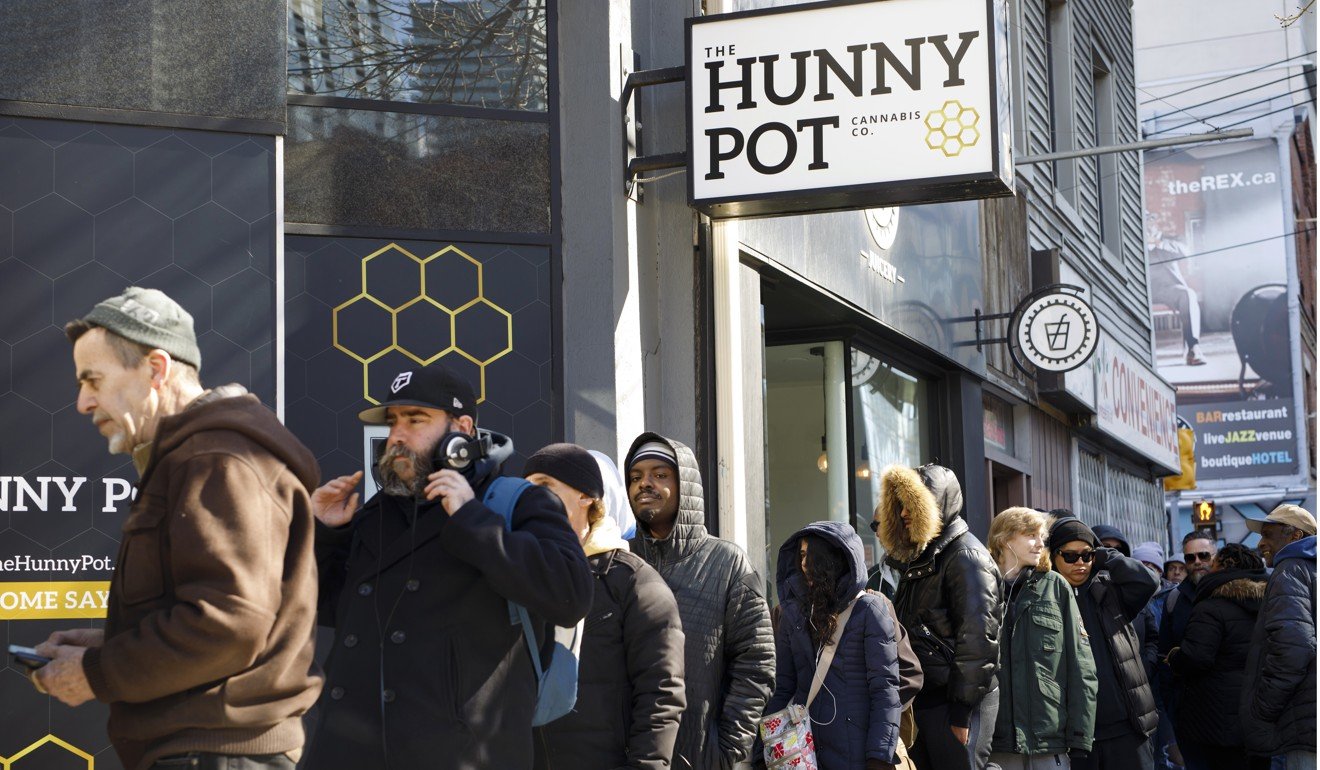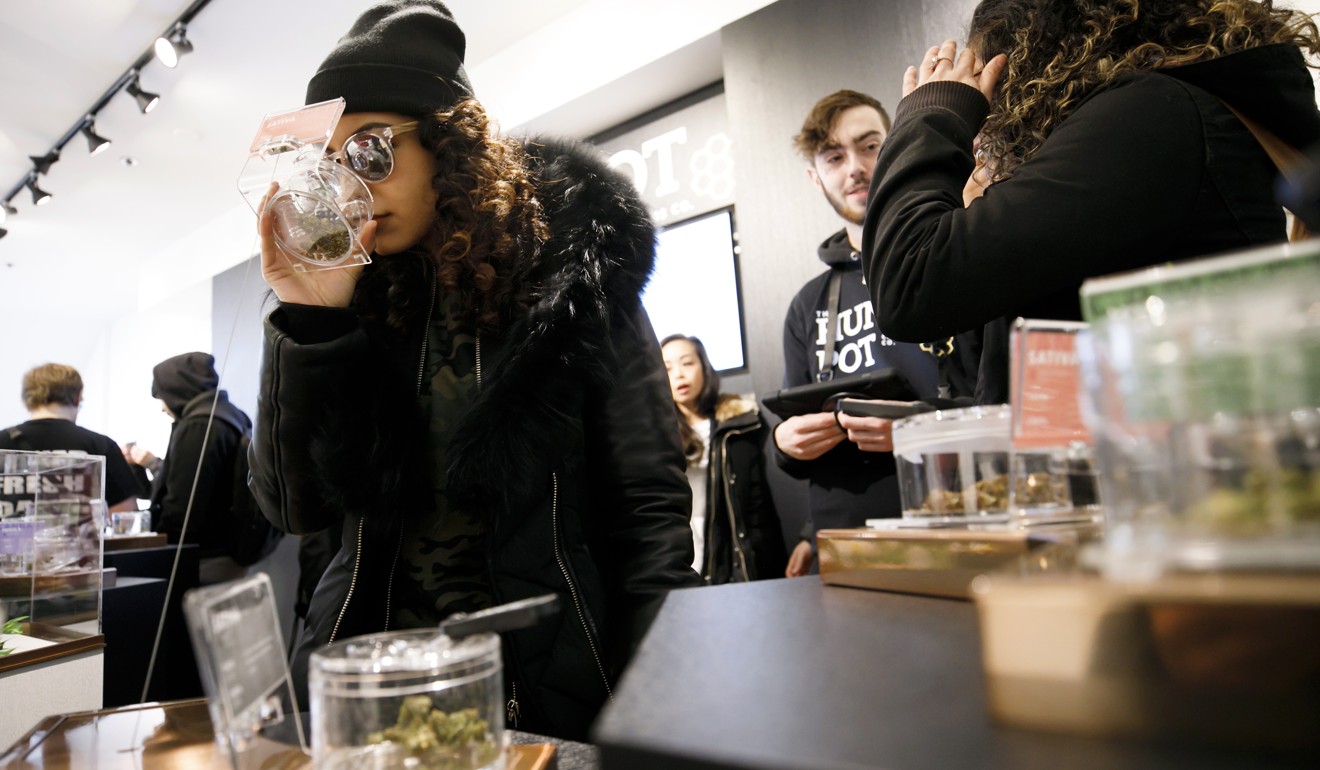
Back by dope demand: Canadian cannabis users return to black market as legal shops struggle with supply
- Getting rid of black market was a key aim of PM Justin Trudeau’s legalisation plan, but government admits there are ‘clearly still issues in the supply chain’

High prices, short supplies and queues at stores: six months after Canada legalised recreational cannabis, people are still buying a lot of pot on the black market as legal sources fail to meet demand.
But authorities say the legal market will eventually put street dealers and criminal gangs out of work, once the fledgling industry finds its footing.

“There are clearly still issues in the supply chain,” said Bill Blair, Prime Minister Justin Trudeau’s point man on cannabis legalisation.
In October, Canada became only the second country in the world to legalise recreational cannabis, five years after Uruguay.

But six months on, people queue outside outlets and supplies of many popular strains have dried up.
A patchwork of public and private online portals and brick and mortar stores have popped up across the country, as each province rolled out their own marijuana retailing framework.

Ontario – the nation’s biggest pot market – was late to the game, opening only 10 shops out of 25 licensed in the province on April 1, relying until now on a government online portal.
“They’re working through it and they’re making progress,” Blair commented. “And what we see every month is continued progress in displacing of the illicit market and creating a normalised supply chain.”
Getting rid of the black market was a key objective in Trudeau’s legalisation plan.
A few people feared a surge in drug-impaired driving and pot-related casualty visits, but authorities said that has not happened.
In the last three months of 2018, the lion’s share of sales – 79 per cent, valued at C$1.2 billion (US$900 million) – were by illicit dealers.

According to Statistics Canada, legal sales – including medical marijuana, which has been allowed in Canada since 2001 but accounts for only a fraction of total consumption – amounted to only US$230 million.
Canada has one of the world’s highest rates of cannabis use – with almost 15 per cent of the population or more than 5 million people having consumed pot.
I’ve been paying the same price for pot from this guy for the past 10 years so why would I go to a flashy new store and pay huge mark-ups
Its supply shortage can be explained in part by the heavy licensing process imposed by the federal government.
Another reason put forward is the relatively short amount of time growers had to ramp up – about four months from the time the cannabis legalisation law was passed by parliament to its entry into force.
As a result, the average price of dried cannabis in Canada has increased by more than 17 per cent since legalisation, to C$8.04 (US$6.02) per gram, according to the government statistical agency.
Buyers of legal pot are paying on average 57 per cent more than for cannabis bought on the black market, which actually saw prices fall.

“I’ve continued buying from my [illicit] dealer because the price of legal cannabis is outrageous,” said John, who lives around the corner from downtown Ottawa’s first legal pot store. “I’ve been paying the same price for pot from this guy for the past 10 years so why would I go to a flashy new store and pay huge mark-ups? It just wouldn’t make sense.”
The store near him, Fire and Flower, raked in a whopping US$37,000 in sales on its April 1 opening day.
In Montreal, Anna Kagadaeva, in her 20s, is more sanguine about the legal market.
“It took me a while before I came to the store because I was told there were queues and there wasn’t much selection,” she said.
But she now shops for weed regularly at Quebec’s government-run shops because she finds them convenient and it’s a safer and healthier choice.
“The supply situation is improving week by week” and “it will pick up significantly towards the end of spring,” said Fabrice Giguere of the Quebec Cannabis Society (SQDC), after contracting six new suppliers.
His outlook was echoed by several cannabis company executives, who also predicted a drop in prices as supplies rise.
In Quebec, “our goal is to take 30 per cent of the market by the end of October”, Giguere said, adding that the SQDC is betting it can grow that figure to 70 per cent in five years, displacing the black market.